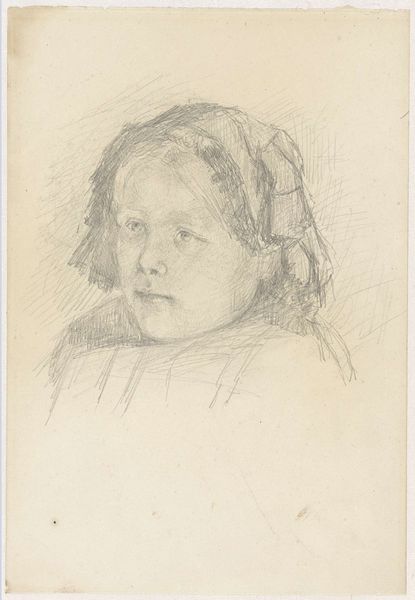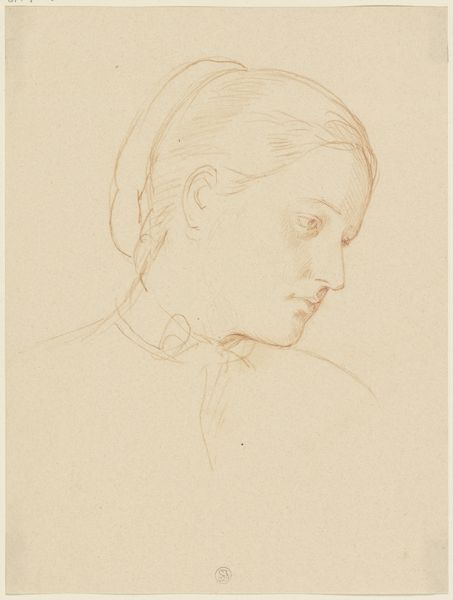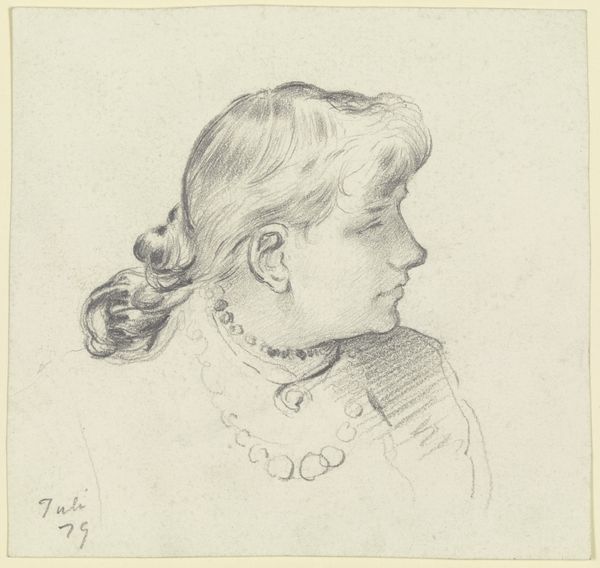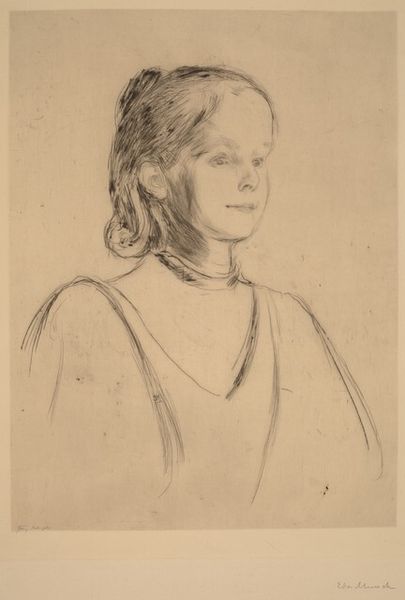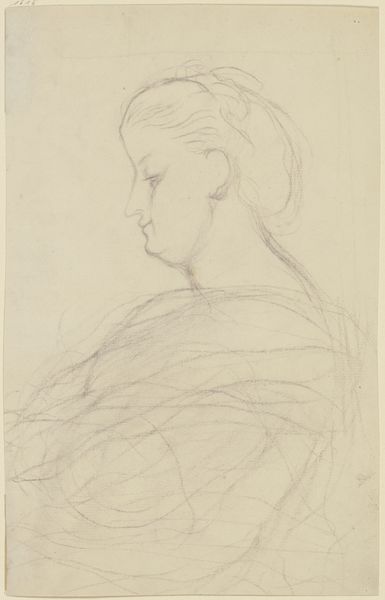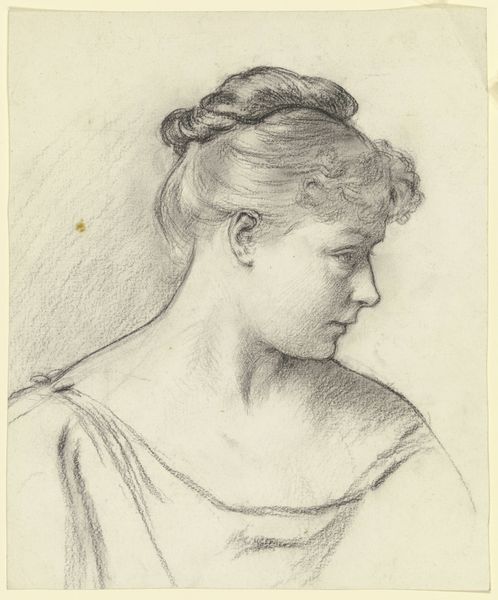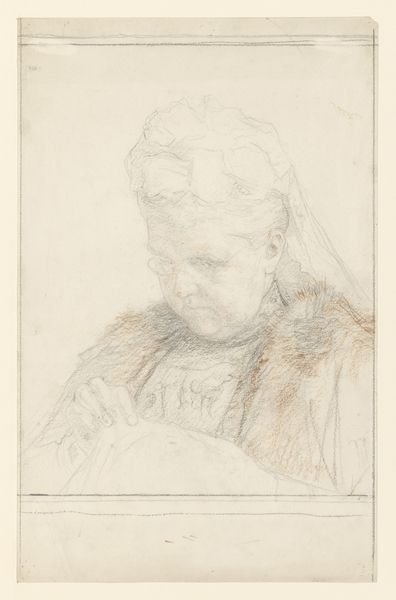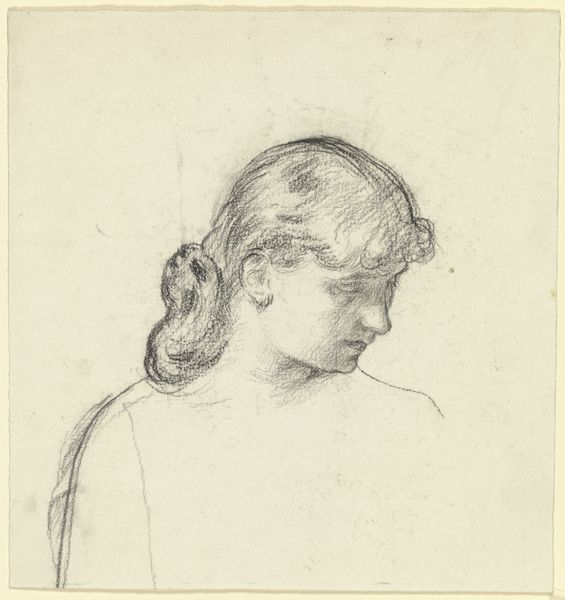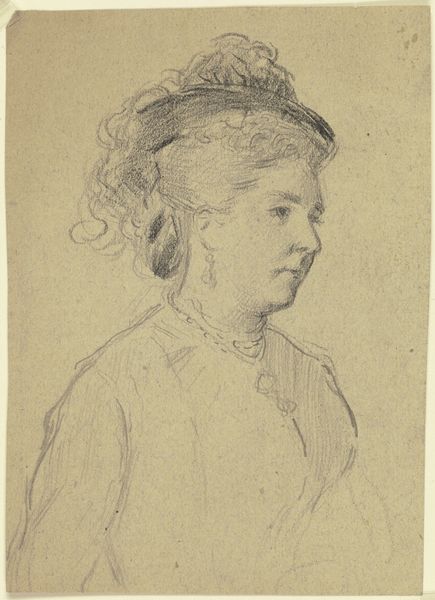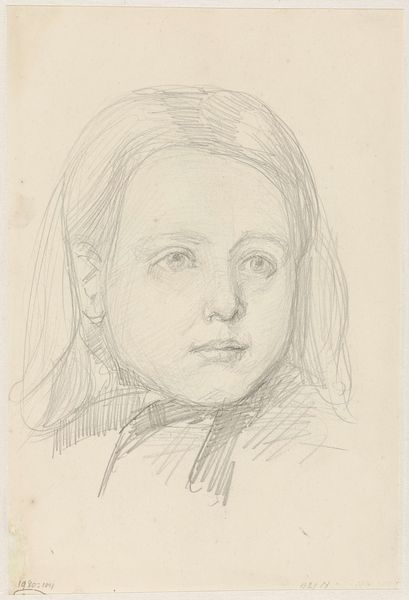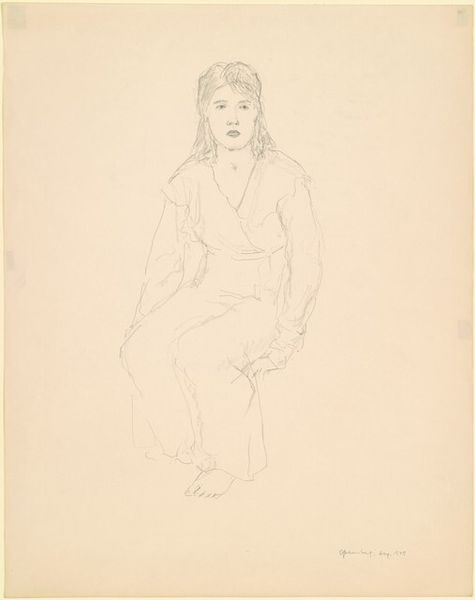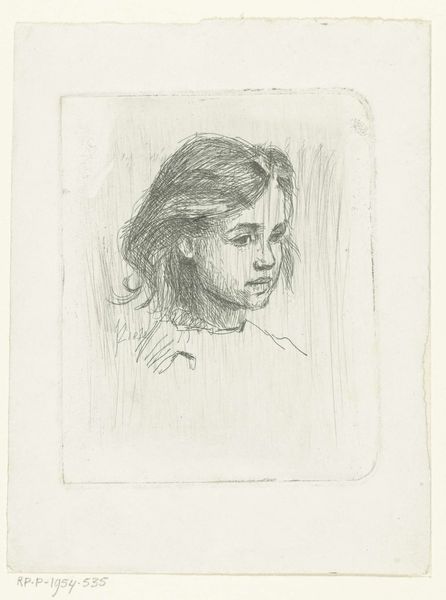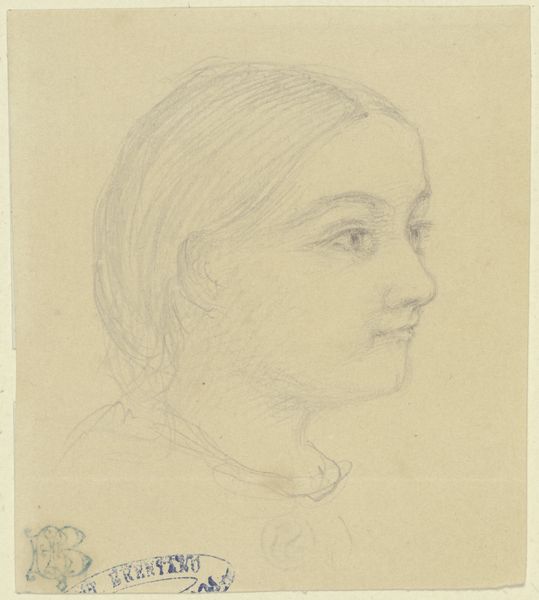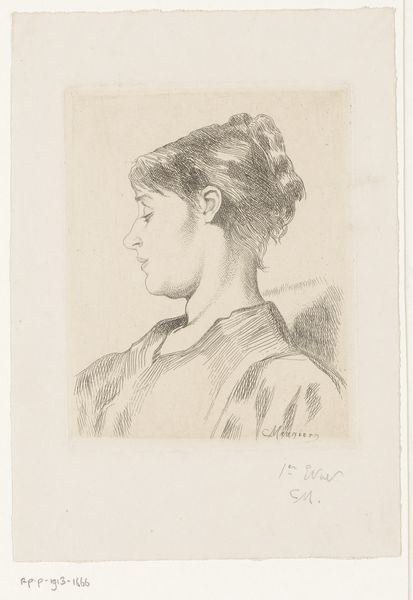
drawing, pencil
#
portrait
#
drawing
#
16_19th-century
#
caricature
#
pencil drawing
#
pencil
#
portrait drawing
Copyright: Public Domain
Curator: Welcome. Before us we have "Bildnis eines Jünglings mit langen Haaren," which translates to "Portrait of a Young Man with Long Hair." It's attributed to Eugen Eduard Schäffer, although the date is unknown. This work is currently held in the Städel Museum collection. Editor: The fragility is immediately striking. Look at the barely-there lines of the pencil on what seems to be equally delicate paper. There's a real vulnerability to the sketch. Curator: Indeed. The ethereal quality stems from its creation entirely in pencil, characteristic of the medium's capacity for subtle tonal gradations. Note the strategic deployment of line. Schäffer builds form primarily through contour, defining shape through its outlines, hinting at, rather than fully establishing volume. Editor: The way the pencil is used suggests an artist working quickly, experimentally, as if trying to capture a fleeting impression rather than a posed subject. The almost caricaturistic features add to the informality. Were pencils common during Schäffer's time, or were they considered luxury tools? Curator: Pencils, especially by the 19th century, were increasingly available, shifting from a luxury to a tool accessible to a wider range of artists and draftsmen. Consider the subject’s gaze: direct and contemplative, fostering a unique relationship with the viewer, mediated, of course, through Schäffer's artistic vision. Editor: The relative availability of pencils also indicates more democratic possibilities for portraiture. It democratized art-making to some extent and enabled images outside traditional formal portrait commissions. What kind of labour goes into the making of the pencil itself? Curator: That is a key material consideration often overlooked. Mining the graphite, processing the wood, assembling and distributing. These tasks shaped economies and involved layers of often invisible labor, subtly shaping even seemingly simple drawings such as this portrait. Editor: Considering all of this changes how one sees a sketch that appears simple. There's a history of material production imbued into these faint lines, adding a layer of meaning. Curator: Precisely. Looking at this, I appreciate even more the piece’s subtle formal tensions— between line and form, presence and absence— and the quiet dialogue it sets up across centuries. Editor: For me, thinking about the materials and labour encourages a deeper reading, connecting the visible image to larger networks of social and economic practice.
Comments
No comments
Be the first to comment and join the conversation on the ultimate creative platform.
